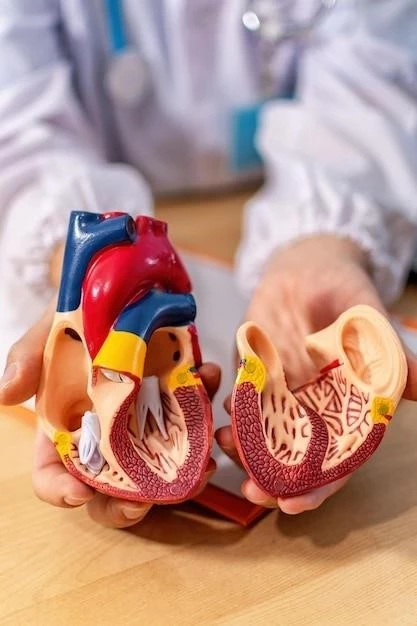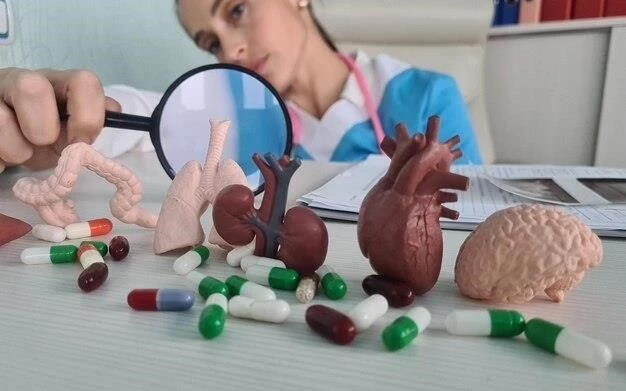Introduction
Microcephaly-cardiac defect-lung malsegmentation syndrome is a very rare condition characterized by distinct features affecting multiple organs.
Microcephaly-cardiac defect-lung malsegmentation syndrome is an extremely rare condition characterized by a combination of microcephaly, heart defects, lung segmentation defects, renal hypoplasia, and cleft palate. It is also known as Ellis-Yale-Winter syndrome. The syndrome is classified as a disorder with an autosomal recessive inheritance pattern, with prevalence lower than 1 in 1,000,000 individuals. Prognosis is generally poor, with affected individuals typically experiencing various challenges and complications from infancy onwards.
Causes and Risk Factors
The exact cause of Microcephaly-cardiac defect-lung malsegmentation syndrome is unknown but likely involves genetic mutations and environmental factors.
The Microcephaly-cardiac defect-lung malsegmentation syndrome is likely caused by genetic mutations combined with environmental factors. These could include exposure to toxins, infections during pregnancy, and certain medical conditions like diabetes.
Symptoms
The symptoms of Microcephaly-cardiac defect-lung malsegmentation syndrome include microcephaly, heart defects, lung segmentation defects, renal hypoplasia, and cleft palate.
Characteristics and clinical manifestations of the syndrome
Microcephaly-cardiac defect-lung malsegmentation syndrome is a rare condition characterized by microcephaly, heart defects, lung segmentation defects, renal hypoplasia, and cleft palate. It is hereditary and typically presents early in life, with affected individuals experiencing various challenges, including high mortality rates in infancy.
Diagnosis
The diagnosis of Microcephaly-cardiac defect-lung malsegmentation syndrome involves genetic testing, imaging studies, and clinical evaluations.
Genetic and environmental factors contributing to the syndrome
The exact cause of Microcephaly-cardiac defect-lung malsegmentation syndrome is unknown but likely involves a combination of genetic mutations and environmental factors such as exposure to toxins, infections during pregnancy, and certain medical conditions like diabetes. This rare syndrome is typically hereditary and manifests early in life, often resulting in severe challenges and high mortality rates, particularly in infancy.
Treatment
Treatment approaches for Microcephaly-cardiac defect-lung malsegmentation syndrome focus on managing symptoms and providing supportive care.
Overview of Microcephaly-cardiac defect-lung malsegmentation syndrome
Microcephaly-cardiac defect-lung malsegmentation syndrome, also known as Ellis-Yale-Winter syndrome, is an extremely rare disorder characterized by microcephaly, heart defects, lung segmentation defects, renal hypoplasia, and cleft palate. The syndrome has an autosomal recessive inheritance pattern with a prevalence of less than 1 in 1,000,000 individuals. Typically presenting early in life, affected individuals face various challenges and complications, often with a poor prognosis and high mortality rates, particularly in infancy.
Prognosis
The prognosis for individuals with Microcephaly-cardiac defect-lung malsegmentation syndrome is typically poor, with high mortality rates, especially in infancy.
Outlook and potential outcomes for individuals with the syndrome
Individuals with Microcephaly-cardiac defect-lung malsegmentation syndrome typically face a poor prognosis, often characterized by high mortality rates, especially in infancy due to the severe nature of the condition. The syndrome is known to present early in life, with affected individuals experiencing a range of challenges and complications impacting various organs.
Research and Studies
Specialists researching Microcephaly-cardiac defect-lung malsegmentation syndrome have made significant advancements in understanding the rare condition.
Current advancements and ongoing investigations related to the syndrome
Specialists researching Microcephaly-cardiac defect-lung malsegmentation syndrome have made significant advancements in understanding the rare condition. These specialists have received grants, written articles, run clinical trials, or taken part in organizations related to the syndrome, enhancing knowledge and potential treatment options. Ongoing investigations aim to further unravel the complexities of the syndrome and improve care strategies for affected individuals.
Support and Resources
Organizations and assistance are available for individuals affected by Microcephaly-cardiac defect-lung malsegmentation syndrome, providing support and valuable resources.
Organizations and assistance available for individuals affected by Microcephaly-cardiac defect-lung malsegmentation syndrome
Support and resources are available for individuals and families affected by Microcephaly-cardiac defect-lung malsegmentation syndrome. These resources offer valuable assistance, information, and guidance to help navigate the challenges associated with the rare condition.

Prevalence and Inheritance
The Microcephaly-cardiac defect-lung malsegmentation syndrome is an extremely rare disorder with a prevalence of less than 1 in 1,000,000 individuals due to an autosomal recessive inheritance pattern.
Statistics on the occurrence and genetic transmission of the syndrome
Microcephaly-cardiac defect-lung malsegmentation syndrome is an incredibly rare condition, with a prevalence of less than 1 in 1,000,000 individuals. It is known to be transmitted as an autosomal recessive trait, often leading to severe challenges with a poor prognosis, particularly in early infancy where mortality rates are high.
Specialists and Clinical Trials
Specialists who have researched Microcephaly-cardiac defect-lung malsegmentation syndrome participate in clinical trials and contribute to ongoing investigations.
Specialists who have conducted research on Microcephaly-cardiac defect-lung malsegmentation syndrome have been actively involved in clinical trials, received grants, written articles on the condition, and collaborated with relevant organizations. Their expertise and contributions play a crucial role in advancing understanding and treatment options for this rare syndrome.

Complications
Potential complications in individuals with Microcephaly-cardiac defect-lung malsegmentation syndrome may include heart issues, lung malformations, and developmental delays.
Experts involved in researching and treating Microcephaly-cardiac defect-lung malsegmentation syndrome
Specialists who have conducted research on this syndrome have been actively involved in clinical trials, received grants, and contributed to articles, enhancing knowledge and potential treatments.
Supportive Care
Strategies and services are available to provide comprehensive care for individuals with Microcephaly-cardiac defect-lung malsegmentation syndrome.
Strategies and services available to provide comprehensive care for individuals with the syndrome
Supportive care for individuals with Microcephaly-cardiac defect-lung malsegmentation syndrome may encompass a multidisciplinary approach involving healthcare professionals, therapists, and support organizations to address the complex needs associated with the condition. Services may focus on symptom management, developmental support, and improving overall quality of life for affected individuals and their families.
In conclusion, Microcephaly-cardiac defect-lung malsegmentation syndrome is a rare and complex condition that presents unique challenges for affected individuals, requiring specialized care and support.
Summary of key points regarding Microcephaly-cardiac defect-lung malsegmentation syndrome
Microcephaly-cardiac defect-lung malsegmentation syndrome is an extremely rare disorder characterized by microcephaly, heart defects, lung segmentation defects, renal hypoplasia, and cleft palate. It has an autosomal recessive inheritance pattern with a prevalence of less than 1 in 1,000,000 individuals. The syndrome typically presents early in life and has a poor prognosis, with high mortality rates in infancy due to the severity of the condition.
